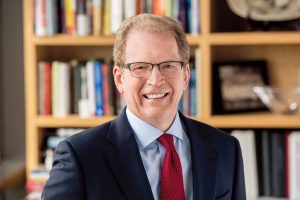Stanford University’s Dean of Medicine is Dr. Lloyd Minor. He practices as an ear, nose, and throat specialist – called an otolaryngologist – and plays the cello as a hobby. When COVID-19 came to California, it was already spreading through New York's streets like wildfire. It's been a profoundly transformative experience for the healthcare industry as those working within it rose to meet the challenge. Dr. Minor reflects on how these months spent battling the coronavirus have forged a new system more open to technology.
Minor believes California was spared some of the damage that New York suffered as his state was an early adopter of shelter-in-place legislation. He also pointed out that New York’s extensive public transit system might have made it possible to transmit the disease while people were in close, crowded quarters. His state doesn’t have anything comparable, and that might have cut down on transmission between people.
In terms of whether there were promising treatments, Minor states that work to find the right medication is ongoing. He mentioned early-stage trials that are showing potential but nothing that has proven to be effective. The real goal, he says, is to develop a vaccination, but it's likely going to take 18 months. While some are attempting to fast-tracking the process, there are many steps to making a vaccine.
It was surprising to Minor how quickly telemedicine became a mainstay of everyday healthcare practice. In February, there were 1,000 virtual visits a week in their adult healthcare delivery system. Now, they make more than 3,000 appointments in one day – a 50-fold increase. He gives credit to the IT team, who made it possible to scale up the technology so quickly.
“What we’re discovering is that we can do a lot more through a virtual visit than we thought we could in the past. And yet I’m also sure we are only scratching the surface. The revolution in digital health, which had begun long before COVID-19, is going to increase and become more meaningful now,” Minor shared in an Ozy interview.
Minor reflects upon what the future might bring for digital health. He points to what might be possible if people would be able to integrate blood pressure measurement, glucose readings, and other options into virtual visits. As with telemedicine, the technology exists to make these things possible, but there hasn't yet been a catalyst for that kind of change. He believes that continuing with these measures will create more opportunities for in-person visits.
As for Minor himself, the changes in his own life have been less dramatic. He doesn't go to the gym right now, and he's home in the evenings. Minor misses connecting with those who support Stanford and work in his faculty, but he knows it's only temporary. Until things change, he is spending more time with his wife and working from home.























